With increasing phosphorus levels, Lake Winnipesaukee has recently experienced two lake-wide blooms. Read the whole article from the Boston Globe here.
Author: Neil Santos
Paddle Poker Postponed Until Sunday June 29
Sunday June 29, 2025 2:00 – 4:00PM
After-Party Starting at 4:00 PM
Given that the forecast for the original date, Saturday, June 28, now includes thunder as well as rain, the Paddle Poker organizers have made the call. For safety’s sake, the event will now take place the following day; same time, same stations, same raffle prizes, same after-party location.
BUT NOW, for those who were not free to attend on Saturday, YOU MAY REGISTER TO PARTICIPATE ON SUNDAY! You can go to: https://www.zeffy.com/ticketing/paddle-poker–2025 .
Weather promises to be drier and warmer, and the same activities will entertain everyone. Come try your luck, both at poker and raffle drawings. Even if you end up with a poor poker hand, there is a prize for that, too!
If you registered for Saturday but cannot make it on Sunday, and have not already let the organizers know, contact Shelly Heit at shellyheit@gmail.com. She will draw a hand for you so you still have a chance to win some prizes. If you have purchased raffle tickets, she can send you a list of what we have to offer and will place your tickets in the appropriate jars as directed.
Otherwise, hope to see you on the lake Sunday!
PLIA Annual Meeting at the State Park Pavilion, Record Attendance
In case you missed the PLIA Annual Meeting, here is a recap.
 The early rain and chilly temperatures did not deter folks from turning out for the PLIA’s Annual Meeting on June 14, 2025. In fact, with over 127 people at the State Park Pavilion, it was the highest recorded attendance ever! Nottingham Select Board members Charlotte Fyfe and John Decker were present, as was State Representative Scott Pryor. President Tom Duffy acknowledged Park Manager Dave Richardson’s generosity in donating the use of the Pavilion for our Annual Meeting.
The early rain and chilly temperatures did not deter folks from turning out for the PLIA’s Annual Meeting on June 14, 2025. In fact, with over 127 people at the State Park Pavilion, it was the highest recorded attendance ever! Nottingham Select Board members Charlotte Fyfe and John Decker were present, as was State Representative Scott Pryor. President Tom Duffy acknowledged Park Manager Dave Richardson’s generosity in donating the use of the Pavilion for our Annual Meeting.
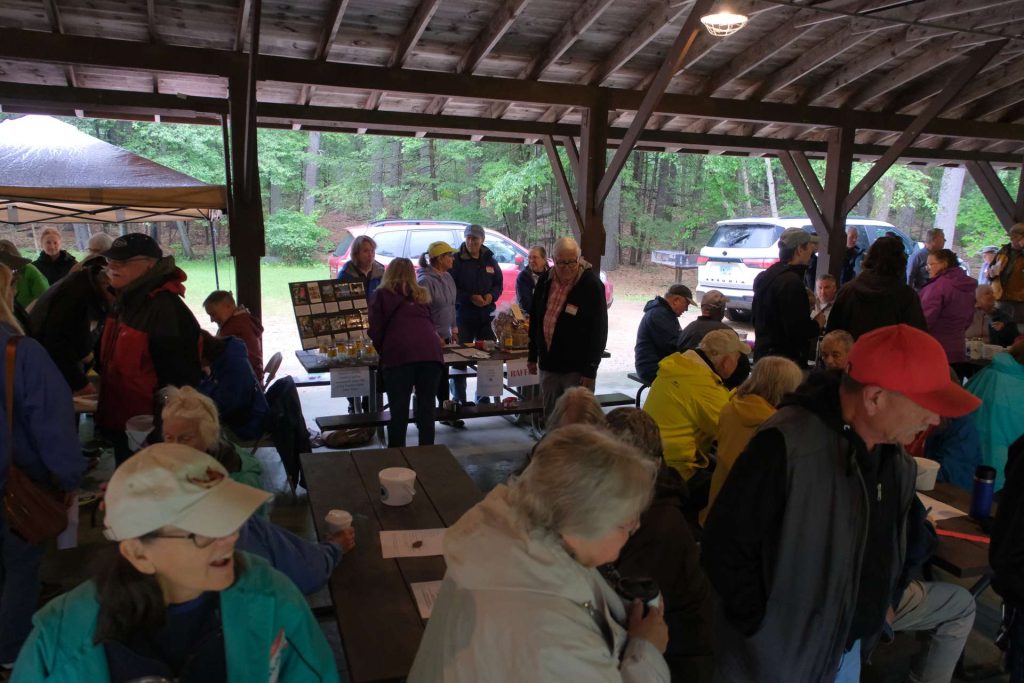 There were three raffles to be given away at the meeting, and plenty of raffle tickets available for the Paddle Poker event scheduled for June 28, 2025. Registering for Paddle Poker was easy, and Pawtuckaway playing cards were on sale as well.
There were three raffles to be given away at the meeting, and plenty of raffle tickets available for the Paddle Poker event scheduled for June 28, 2025. Registering for Paddle Poker was easy, and Pawtuckaway playing cards were on sale as well.
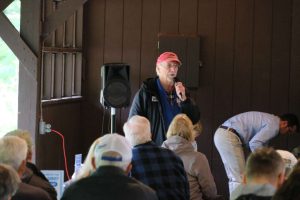 Members voted to elect a slate of nominees to the PLIA Board of Directors, and to change the organization’s fiscal year from June 1 – May 31 to January 1 – December 31. Tom Duffy explained that this amendment to the Bylaws would avoid a lot of confusion, since membership is also on a calendar year.
Members voted to elect a slate of nominees to the PLIA Board of Directors, and to change the organization’s fiscal year from June 1 – May 31 to January 1 – December 31. Tom Duffy explained that this amendment to the Bylaws would avoid a lot of confusion, since membership is also on a calendar year.
Government Liaison Tom Duffy looked back to our success getting approval of the Warrant Article authorizing the Town to apply for a $100,000 grant for the PLIA’s watershed study, and forward to hearing whether we have been awarded the funds.
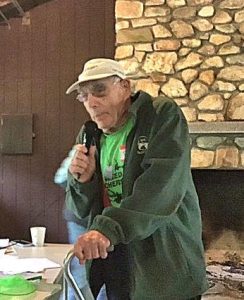 Steve Soreff, Co-Chair of the Weed Watcher program, congratulated Karen Given and Linda St. Pierre on collecting and disposing of 2,000 Chinese mystery snails last summer! He urged everyone to be on the lookout for weeds and snails, inviting attendees to take home telescoping nets at the conclusion of the meeting to keep in their kayaks for capturing Chinese mystery snails.
Steve Soreff, Co-Chair of the Weed Watcher program, congratulated Karen Given and Linda St. Pierre on collecting and disposing of 2,000 Chinese mystery snails last summer! He urged everyone to be on the lookout for weeds and snails, inviting attendees to take home telescoping nets at the conclusion of the meeting to keep in their kayaks for capturing Chinese mystery snails.
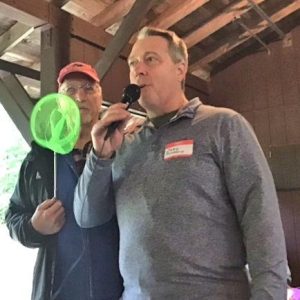 Gary Potavin pointed out the snail collecting buckets donated by his daughter Sonoma that were placed on tables for people to take home with them as well. Tom Duffy announced that Sonoma had raised over $400 from the sales of bucket camp seats she had made and was donating all of it to the PLIA. He added that we need more supporters like her.
Gary Potavin pointed out the snail collecting buckets donated by his daughter Sonoma that were placed on tables for people to take home with them as well. Tom Duffy announced that Sonoma had raised over $400 from the sales of bucket camp seats she had made and was donating all of it to the PLIA. He added that we need more supporters like her.
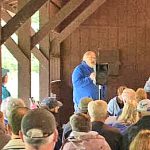 Bruce Henden called for more volunteers for the Lake Host Program, to keep invasive species from going into or out of the lake. Tom Duffy emphasized how easy Lake Hosting can be, and offered to team up with any newcomers wanting to learn the ropes. Bruce encouraged everyone to practice the clean, drain, and dry system of boat care, and to urge friends and neighbors with boats to do the same when using private boat ramps.
Bruce Henden called for more volunteers for the Lake Host Program, to keep invasive species from going into or out of the lake. Tom Duffy emphasized how easy Lake Hosting can be, and offered to team up with any newcomers wanting to learn the ropes. Bruce encouraged everyone to practice the clean, drain, and dry system of boat care, and to urge friends and neighbors with boats to do the same when using private boat ramps.
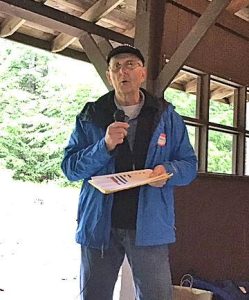 Other reports from Program Chairs included a plea by Milfoil Team Coordinator Neil Santos for more search snorkelers and divers. Milfoil sightings are way down but not eliminated from the lake. Certified Weed Control Diver Jamie Burleigh cautioned members not to let their guard down, because we would like to avoid using herbicide again if it can be avoided. He was pleased to announce a new D.A.S.H. boat that would be available for use on the lake, and hopes to get the Boy Scouts involved in searches again this summer.
Other reports from Program Chairs included a plea by Milfoil Team Coordinator Neil Santos for more search snorkelers and divers. Milfoil sightings are way down but not eliminated from the lake. Certified Weed Control Diver Jamie Burleigh cautioned members not to let their guard down, because we would like to avoid using herbicide again if it can be avoided. He was pleased to announce a new D.A.S.H. boat that would be available for use on the lake, and hopes to get the Boy Scouts involved in searches again this summer.
The next Road Clean Up event will take place on July 12, 2025, at 9:00 AM. Water testing has been conducted on Pawtuckaway since the 1980’s, to monitor water quality and phosphorus levels. Tom mentioned that he is hoping to prevent phosphorus from entering the north end of the lake with holding ponds someday.
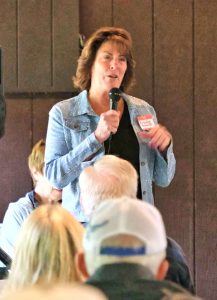 Brooke Schaefer revealed that a new fundraiser is being planned, called Pawtuckaway Games, loosely based on the Amazing Race. Teams of two will engage in timed events on five abutting properties. It is scheduled for September 13, 2025. Stay tuned!
Brooke Schaefer revealed that a new fundraiser is being planned, called Pawtuckaway Games, loosely based on the Amazing Race. Teams of two will engage in timed events on five abutting properties. It is scheduled for September 13, 2025. Stay tuned!
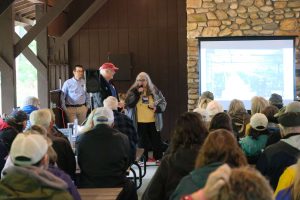 Tom Duffy declared Therese Thompson the winner of the 2024 Local Hero Award. Therese is a long-time supporter of the PLIA, starting back decades ago when she would rise before dawn to volunteer her services as boat inspector when fishing tournaments were scheduled at the Fundy. She and Tom traveled together for meetings with NH DES when our relationship with that agency was in its infancy. She created a booklet for identifying invasive aquatic species and conducted many trainings of Weed Watchers. Therese served on the Board of Directors of the PLIA and even though she has moved from the lake, she remains active in assisting the Board with grant writing and keeping them informed of events and activities of importance within the Lamprey River watershed.
Tom Duffy declared Therese Thompson the winner of the 2024 Local Hero Award. Therese is a long-time supporter of the PLIA, starting back decades ago when she would rise before dawn to volunteer her services as boat inspector when fishing tournaments were scheduled at the Fundy. She and Tom traveled together for meetings with NH DES when our relationship with that agency was in its infancy. She created a booklet for identifying invasive aquatic species and conducted many trainings of Weed Watchers. Therese served on the Board of Directors of the PLIA and even though she has moved from the lake, she remains active in assisting the Board with grant writing and keeping them informed of events and activities of importance within the Lamprey River watershed.
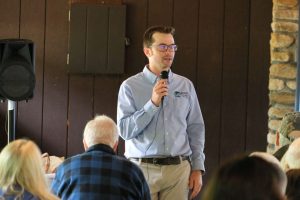 Corey Clark, Chief Engineer of the NH DES Dam Bureau, presented a slide show and spoke about the history of the four dams on Pawtuckaway, starting with their creation around 1800 to supply power to Newmarket Manufacturing. He reviewed studies and repairs that had been conducted over many years, explaining that Drowns and Dolloff Dams are now considered “high hazard” because of the potential catastrophic effects of dam failure and flooding. This also means that their safe condition is a high priority for the State. A copy of Corey’s presentation can be found here.
Corey Clark, Chief Engineer of the NH DES Dam Bureau, presented a slide show and spoke about the history of the four dams on Pawtuckaway, starting with their creation around 1800 to supply power to Newmarket Manufacturing. He reviewed studies and repairs that had been conducted over many years, explaining that Drowns and Dolloff Dams are now considered “high hazard” because of the potential catastrophic effects of dam failure and flooding. This also means that their safe condition is a high priority for the State. A copy of Corey’s presentation can be found here.
Because of their age and deteriorating structures, Pawtuckaway dams are slated for major repairs as soon as funding can be approved and allocated. He projected that construction could happen as soon as 2028 – 2029. In response to questions from the audience, Corey stated that the lake would be lowered 20 feet in the fall, and work would begin as early as possible the following spring, with construction concluding that fall. Filling up the lake starting that winter might be a challenge, but weather events would dictate how quickly that happens.
Tom Duffy concluded the meeting and awarded prizes to the three raffle winners. All in all, a very good meeting!
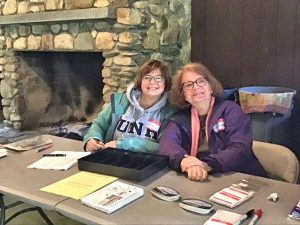
NH Passes Law to Increase Fines for Shoreland Protection Violations
Senate Bill 299 (SB 299) was signed by Governor Kelly Ayotte on June 10, 2025. This new law strengthens enforcement of the Shoreland Water Quality Protection Act by establishing penalties for contractors who supervise or perform work in violation of the law.
By introducing clear enforcement tools, this law aims to deter contractors from knowingly violating shoreland regulations or ignoring permit requirements. It provides added accountability, helping to protect the health of New Hampshire’s lakes and shielding property owners from inadvertently hiring contractors with a history of noncompliance.
Specifically, the law allows for fines up to $5,000 for contractors for the first offense and doubles the fines for subsequent violations.
The law will take effect on January 1, 2026.
Cyanobacteria Warning for Pawtuckaway Lake Removed on June 6
The cyanobacteria warning at your lake has been removed, please see below for details.
| Waterbody | Pawtuckaway Lake, Nottingham |
| Status | Warning REMOVED |
| Issued | 5/28/2025 |
| Removed | 6/6/2025 |
| Notes | Samples were collected around the waterbody (including the State Park beach, town beach, and near the dam) on 6/5/2025. The cyanobacteria density ranged from 400 – 11,400 cells/mL, which is below our recreational threshold of 70,000 cells/mL. All samples were mixed heavily with pollen. As a reminder, it is best practice to avoid recreating in any surface scum as there is potential for cyanobacteria to be mixed in. |
Please visit the Healthy Swimming Mapper for the most current information about bloom location, status, and severity .
Cyanobacteria reports depict only what an observer sees in the water. The report may reflect a waterbody wide perspective if they boated around the waterbody and made observations, or it could be a single sighting from the shoreline. One sighting does not indicate that a watch or warning is necessary, but it does indicate that those on or around the waterbody should be aware that cyanobacteria have been observed beyond what is natural, and that they should be on the lookout for shifting bloom conditions and report them via the Bloom Report Form.
Watches are issued when samples are evaluated and cyanobacteria are in higher abundance than normal background levels at multiple locations, but that densities are below 70,000 cells/mL or when clear photographic evidence indicates a bloom is occurring.
Warnings are issued when samples are evaluated microscopically, and cell counts exceed 70,000 cells/mL and the bloom is widespread or extends to multiple locations on the waterbody. A warning does not close the waterbody to recreational use. The warning is intended as a precautionary measure to inform the public of the potential health risks associated with cyanobacteria blooms. Please see our updated FAQs for more information.
NHDES advises lake users to not swim in or near the vicinity of where bloom material is visible. Please also keep pets and livestock out of areas where bloom material is observed. It is suggested that local authorities post the 2025 cyanobacteria sign at public access points while a warning is in place to alert the public of current conditions.
Paddle Poker, June 28
Cyanobacteria Warning, May 28, 2025
A cyanobacteria bloom has been observed at your lake, please see below for details.
| Waterbody | Pawtuckaway, Nottingham |
| Status | REPORT |
| Issued | 5/28/2025 |
| Bloom Description (photos attached) | Green surface accumulations along the shoreline |
| Cyanobacteria Taxa | Dolichospermum |
| Cyanobacteria Density (cells/mL) | Near Dolloff Dam: Too Numerous to Count (TNTC)
Beach Road Beach: 470,000 |
| Notes | Bloom conditions were first observed on
5/27 near the Dolloff Dam. Samples collected on 5/28 exceeded the recreational threshold at both Dolloff Dam and Beach Road Beach.
Please report through the Bloom Report Form if you continue to see bloom conditions. |
Please visit the Healthy Swimming Mapper for the most current information about bloom location, status, and severity .
Cyanobacteria reports depict only what an observer sees in the water. The report may reflect a waterbody wide perspective if they boated around the waterbody and made observations, or it could be a single sighting from the shoreline. One sighting does not indicate that a watch or warning is necessary, but it does indicate that those on or around the waterbody should be aware that cyanobacteria have been observed beyond what is natural, and that they should be on the lookout for shifting bloom conditions and report them via the Bloom Report Form.
Watches are issued when samples are evaluated and cyanobacteria are in higher abundance than normal background levels at multiple locations, but that densities are below 70,000 cells/mL or when clear photographic evidence indicates a bloom is occurring.
Warnings are issued when samples are evaluated microscopically, and cell counts exceed 70,000 cells/mL and the bloom is widespread or extends to multiple locations on the waterbody. A warning does not close the waterbody to recreational use. The warning is intended as a precautionary measure to inform the public of the potential health risks associated with cyanobacteria blooms. Please see our newly updated FAQs for more information.
NHDES advises lake users to not swim in or near the vicinity of where bloom material is visible. Please also keep pets and livestock out of areas where bloom material is observed. It is suggested that local authorities post the 2025 cyanobacteria sign at public access points while a warning is in place to alert the public of current conditions.
Dam Status Update May 19, 2025
| Corey Clark, P.E., Chief Engineer at the Dam Bureau, NH DES, has this update on the situation at Dolloff Dam:
“The good news is that Pawtuckaway Lake is now full. The sinkhole at Dolloff Dam has not increased in size since it was first observed this spring and leakage through the dam has stabilized at the full lake elevation. However, we are still physically monitoring the site twice a week and several sensors are still providing real time data on the rate of leakage and the water level in several monitoring wells. We are still concerned that sediment is being transported with the leakage resulting in the continued loss of embankment material from the dam. While the volume of sediment is very low, it still needs to be monitored for changes or increases and ultimately needs to be remediated. Diving is scheduled to take place at the dam next week and we are currently working with our engineering consultant to schedule additional test borings at the dam. It is likely that these borings will take place later this summer and will allow us to better understand why the sink hole has developed and what can be done to remedy the situation. It is likely that any remedy will be temporary, and a much larger future rehabilitation of the dam will need to occur to mitigate this and other dam safety issues. Additionally, the removal of Burnhams Marsh Dike has been completed and the site of the former dam has now been restored to what we believe was the condition of the site prior to the installation of the dam. While I hope you find this email as good news, if we observe that the sinkhole is increasing in size or if the structural stability of the dam is questioned, then we will again start lowering the elevation of Pawtuckaway Lake to reduce the risk of an emergency situation from developing. Should that need arise I will notify everyone on this email as soon as possible. I will discuss the status of things when I speak at the Annual Pawtuckaway Lake Improvement Association Meeting on June 14th at 9:30am at the Pawtuckaway State Park Pavilion. Hope to see you there.” |
Work on removing Burham’s Dam/Dike Almost Completed, May 6, 2025
Corey Clark, Chief Engineer at the NH DES Dam Bureau, has this update on Pawtuckaway Lake levels:
Unfortunately, the Burnhams Dike removal project will not be wrapped up until Thursday of this week. Until that time we will need to maintain Pawtuckaway Lake 1-2 feet lower than normal in order for the work to occur and will be discharging out of Drowns to keep the level down. As soon as we wrap up the removal project later this week, we will shut down flow from Dolloff and Drowns to store any runoff into the lake.
Past and Current Editions of PawPrints are now Online
Read the current and past issues of PawPrints here. The oldest issue that is currently available is from 1992 although there is a big gap from 1992 to 2005 that would be nice to fill. If anyone has issues that are not currently on the website we would love to add them! Just send an email to Info@PawtuckawayLake.com or contact Pam Kelly or Neil Santos.

